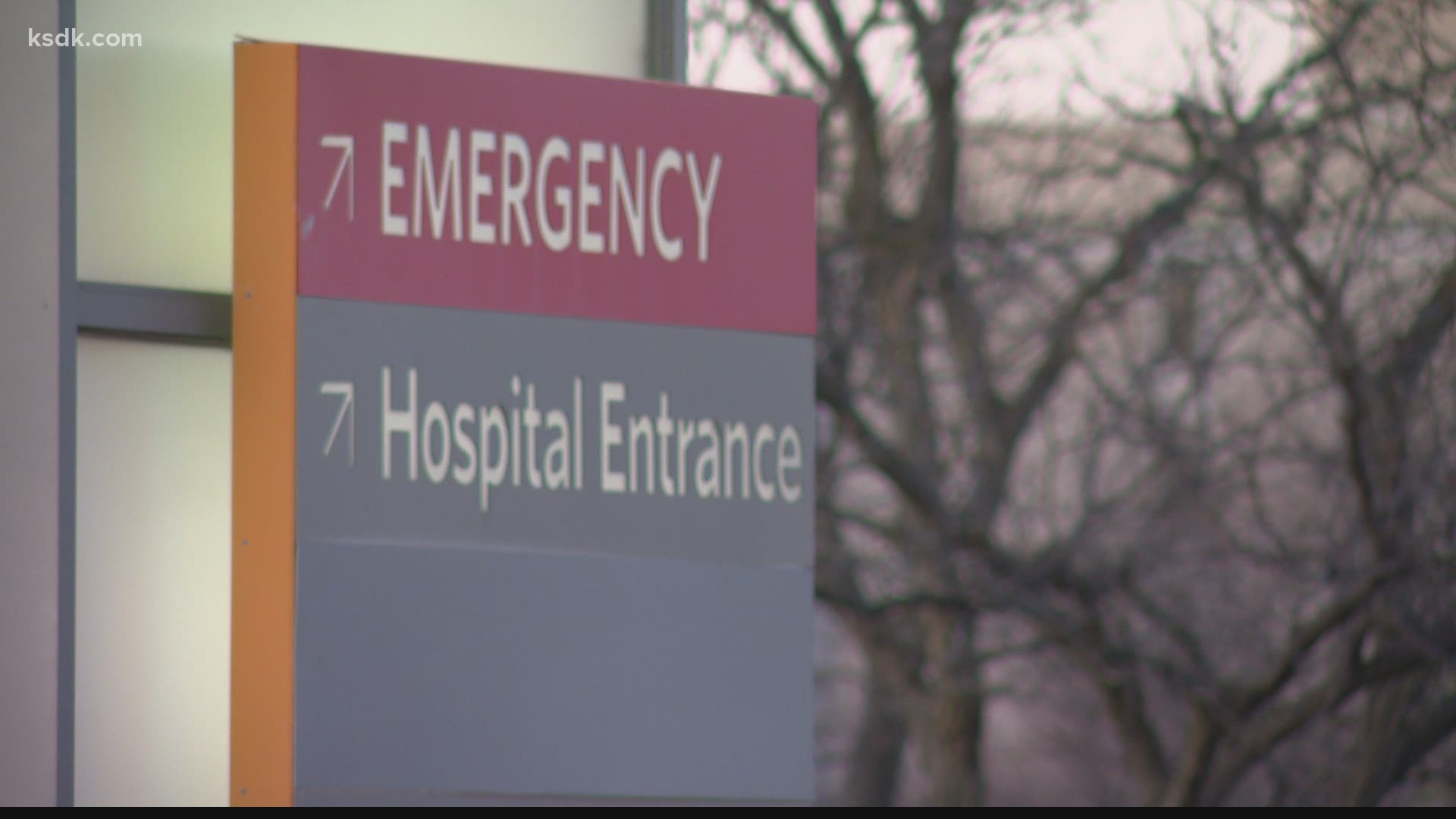ST. LOUIS — A 5 On Your Side viewer wrote in and asked about a drop in mortality rate for COVID-19 patients. The viewer asked what medical professionals would say to someone who used the drop in mortality rate to question the impact the virus is having on the community.
"Any one death is too many, especially when we can prevent it with what we've learned," Dr. Jason Newland, an infectious disease expert at Washington University said.
So, yes.
For the St. Louis area and the state, the rate of weekly deaths when divided by new weekly cases is lower now than it was earlier in the pandemic.

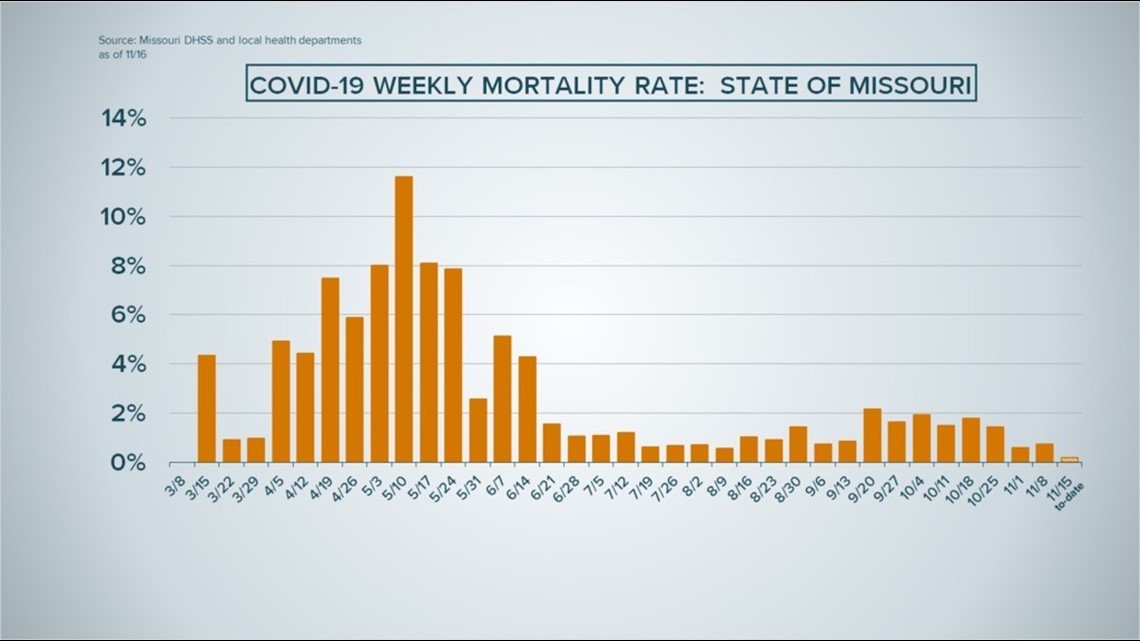

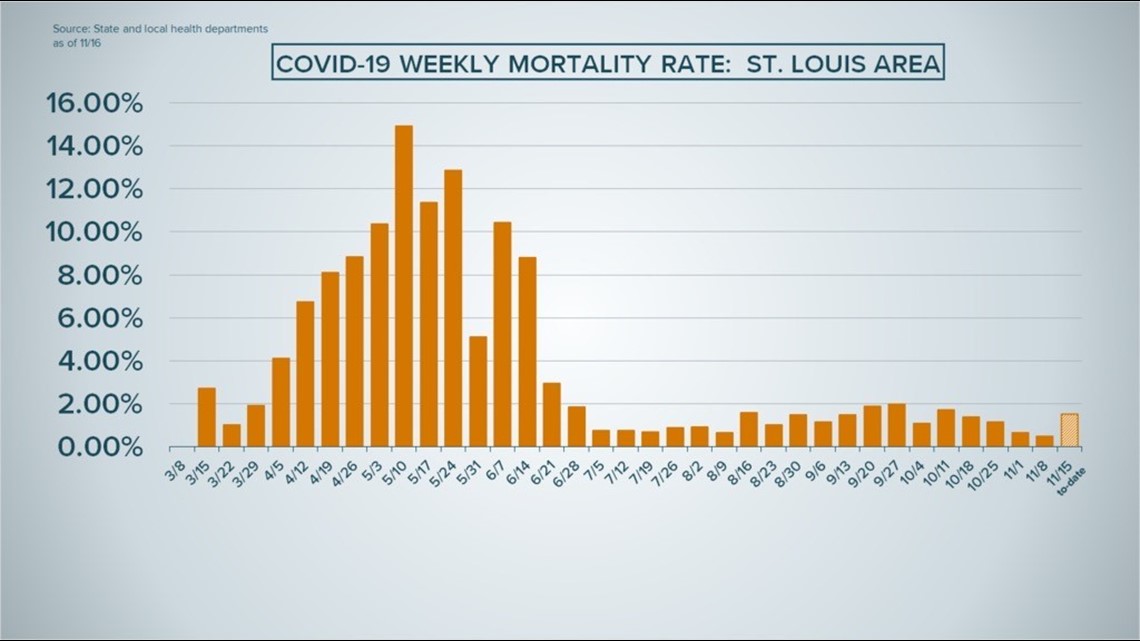
However, there are are a few things to consider with this.
For one, this isn't a perfect science. In many cases, a COVID-19 patient who dies from the virus doesn't pass away the same week of a diagnosis. So, there is likely a delay in that part of the equation.
Secondly, there are a number of factors to consider when looking at how this rate changed since the start of the pandemic.
When testing first started, only people who showed severe symptoms had access to testing.
That means that the percentage of people who tested positive was higher, the total number new positive cases was lower and the percentage of people who tested positive and died was higher.
Think of it like this...in order to even get a test, you had to be really sick.
Now, we know people can carry and transmit the virus without showing any symptoms at all. Testing is also widely accessible.
So, just because the portion of COVID-19 positive patients who passed away earlier in the pandemic is larger than it is now, does not mean the virus has eased up on the state our the St. Louis area.
For the state, while the rate is lower, the number of weekly deaths has been much higher over the past three months than it was early on.

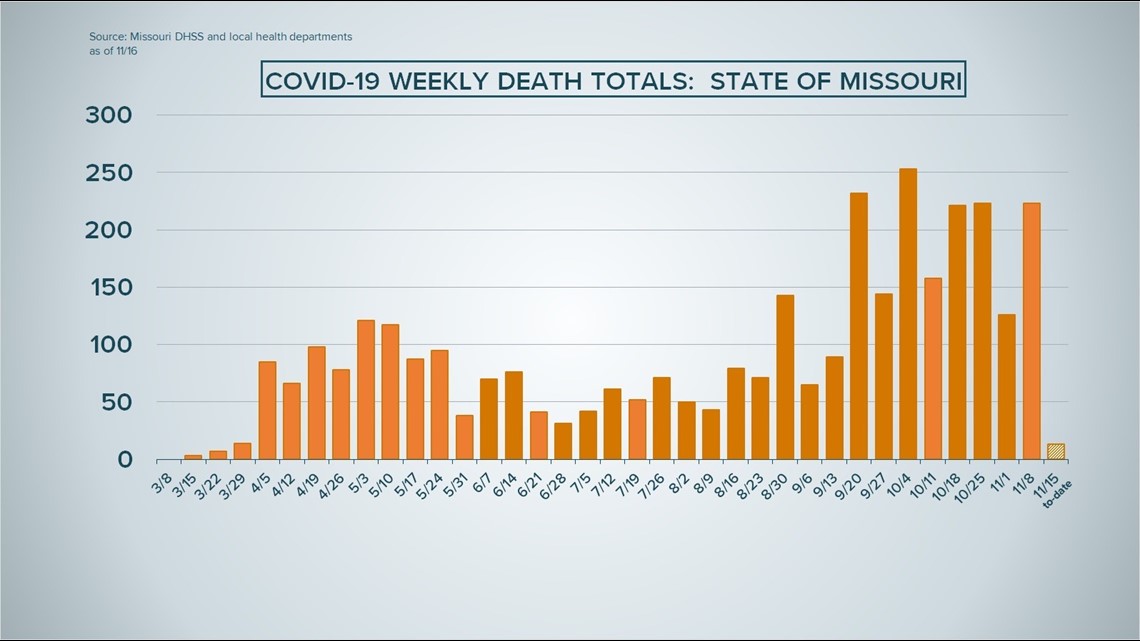
In the St. Louis area, while the rate is much lower, weekly death numbers have been creeping back up toward early-pandemic levels.

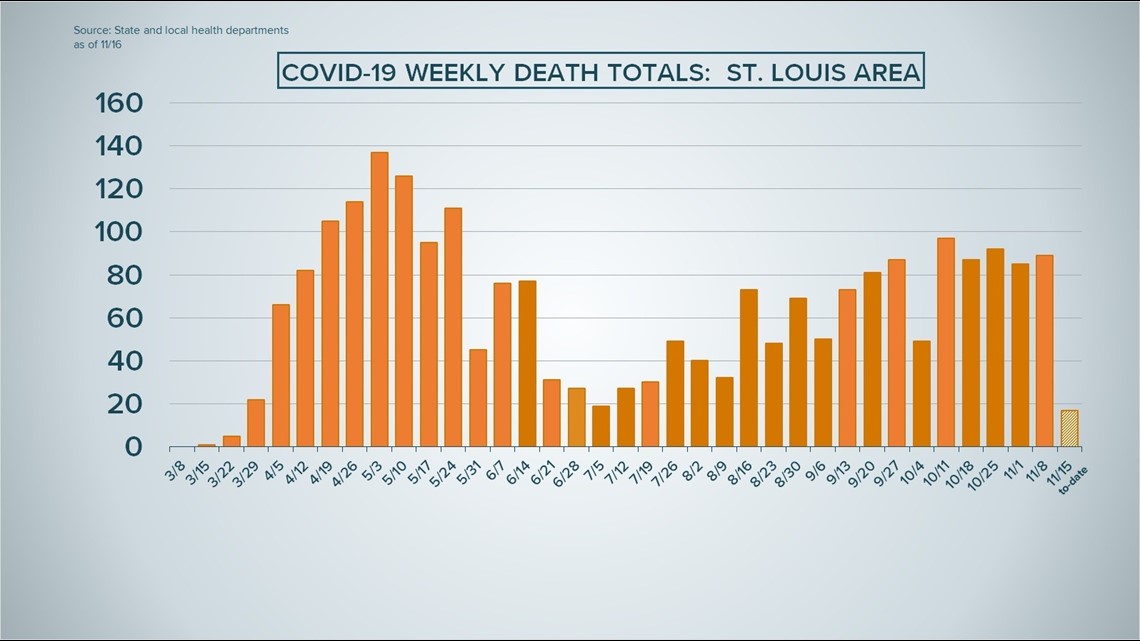
It's important to note the difference between mortality rate and actual number of deaths.
"Yes, the percentage is down," Dr. Newland said. "But if we can't care for them because we don't have place for them, death just goes up."
On Monday, task force hospitals broke a record for total hospitalizations with 809, bringing the seven-day moving average for total number of COVID-19 patients in area hospitals to 707.
Those are the numbers local health experts said should be top-of-mind.
"This is scary," Dr. Newland said.
Dr. Newland said running out of hospital space is not only dangerous for COVID-19 patients but for patients who are facing other potentially life threatening issues, like a heart attack, that require a hospital stay.
On Monday, St. Louis County reported new cases passed the 1,000 mark for the first time. There are 1,061 new cases in the county.
Acting Director for the St. Louis County Health Department Spring Schmitt said a bulk of the cases are people in their 20s and working age adults who are 30-60. However, she said there is more virus circulating which means elderly people and children are starting to see growing case numbers.
"It is often the people who suffer the most disparities who see the most negative outcome," Schmitt said. "It's not necessarily the people who make up a bulk of the cases."
In St. Louis County, Schmitt said the people hit hardest are people over 80, African Americans and people who don't have regular access to health care.
However, as high as St. Louis County's numbers are, Schmitt said they could be much worse. She said the numbers themselves are higher for the county because it's the largest county in the area. She said the virus is actually having a greater impact on surrounding counties that don't have the type of mandates and regulations that are in St. Louis County.
On Tuesday, new restrictions and guidelines go into effect in the county. One of the new guidelines requires people to take ownership of contract tracing and for anyone who tests positive for COVID-19 to self-report it to everyone they've been in contact with.
Schmitt said, while there are concerns that people will do their part, she is hopeful.

